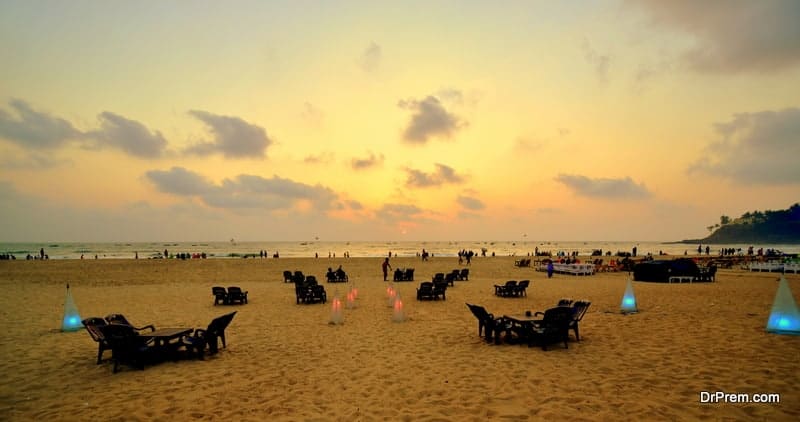The aesthetic vibes that mold casts a society is perhaps the most important component of cultural tourism. Much of the charm is lost with the tourist facing a shocking reality that in his dream destination what culture means is just a few splendid pieces of artwork set amid a bland mass of local inhabitants whose character is as uninteresting and dim witted as the lack of appreciation and awareness that rings in the air against a contrasting backdrop of their own cultural wealth. Reflexes and responses of the locals to their domestic cultural refinements is thus a central module of cultural tourism. The role of media is a vital component to promoting cultural tourism.
Complete Guide to Cultural Tourism by Dr Prem – Definition, History, Advantage, Importance and Destinations
-
Understanding the cultural features
-
Role of media – the vital component of cultural tourism
-
Effective marketing channel with “well-dressed” products
-
Travel agents and tourism arrangements
-
Tourists look for authentic and unique experience
-
Countries promoting cultural tourism
-
Spain
-
Saudi Arabia
-
France
-
Stonehenge Great Britain
-
China
-
Precautions and prevention in cultural tourism
-
What is cultural tourism?
-
History of cultural tourism
-
Why cultural tourism matters
-
Key drivers of cultural tourism
-
Is cultural tourism for you?
-
How to get more information on cultural tourism
-
Importance of planning in cultural tourism
-
Preparations for going on cultural tourism
-
Budgeting cultural tourism
-
Travel and tourism arrangements in cultural tourism
-
Best practices to be implemented in cultural tourism
-
Do’s and don’ts in cultural tourism
-
Things to do post cultural tourism
Understanding the cultural features:
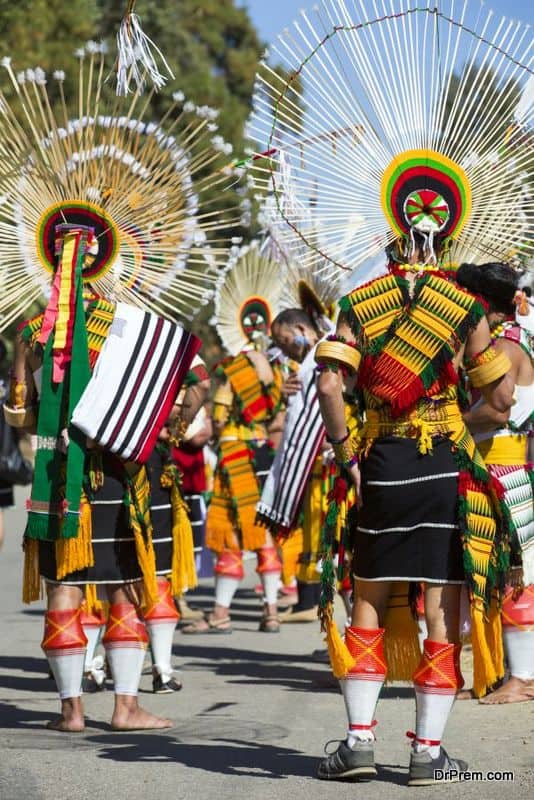
The culture of a destination can be depicted by two concentric circles:
- The inner circle is the heart of culture constituting basic elements of culture that is what people do and produce as a culture. It contains the main components like the age old cultural assets and products.
- The outer circle constitutes the secondary elements including the life style based on beliefs, traditional folklore, art and cuisine. It also includes the creativity part involving fashion, designing, visual and graphic art, media, entertainment and others.
In most of the countries, cultural components based on the above coalesce with each other to form a cultural offering where both the above mentioned constituents complement each other.
Role of media – the vital component of cultural tourism:
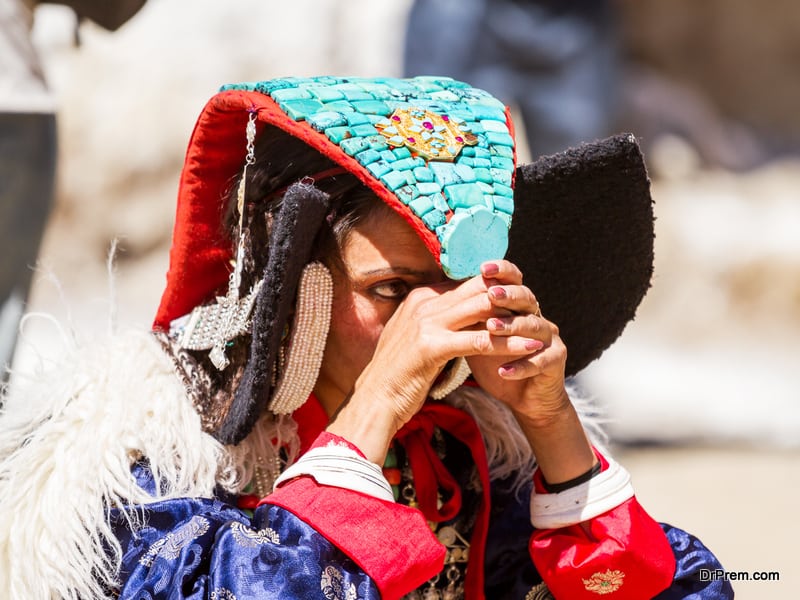
Reflexes and responses of the locals to their domestic cultural refinements is thus a central module of cultural tourism. The role of media is a vital component to promoting cultural tourism.
Texts on art, architecture, traditional rituals, concerts, dances, plays, myths and fables are at galore in libraries, bookstalls and in tourism bureaus. Bright and accurate illustrations and in depth discussion on the subject arouses the tourist interest. Visual media like documentaries and internet exhibits are very effective. A lot depends upon the background audio as it is obvious.
Better the coverage with clarity in discussion, higher would the destination’s demand on the tourist popularity graph. The basic amenities and infrastructural arrangement lead to a booming rush. After a tiring and yet exciting stroll across the local ruins or savoring the delicate pleasure of visiting an art gallery, the tourist would quite naturally next look for settling down in a cozy accommodation with good food, care and hospitality waiting.
He may love to buy a couple of landscapes and portraits done excellently in oil. Existence of selling outlets for work of art will make the tourist’s dream come true. Exposure to a lively concert or attending a local dance troupe perform with elegance would certainly inspire the tourist to look for the text and more reading material giving him further enlightenment on the subject he had just watched in a stage show. Facilities, pavilions and sales counters should exist to feed the tourist’s pursuit for procuring mementos of cultural value. Tribal and ethnic works of art and artifacts are in great demand.
Effective marketing channel with “well-dressed” products:

The government should see that there exists an effective marketing channel. Dollars flow in from the tourist customer. The tribal economy gets a shot in the arm and the tourist leaves smiling for getting his money’s worth of exquisite and exotic pieces. Everyone is happy and the marketing strategies are for sure an undisputed component of cultural tourism.
Travel agents and tourism arrangements:

The travel agents and the tourism arrangements that make it possible for the culture tourism aficionado to have a smooth access to the tourist destination offering a gratifying exposure have a meaningful role to play and sure is an essential component. Without the tour operator’s help, the tourist is trapped in an aimless and futile venture.
What to see, where to stay, what kind of food to eat and what kind of transport is on hand would just be an array of baffling issues. The operator is a worthwhile guide for answering these perplexing questions. He helps the tourist to move on towards a definite target. Needless to say, the experience and track history of the local guide is a necessary component.
Various other factors like attitude of the locals, their support and expectation from foreign visitors, local political conditions and the state of local economy are important components for that matter.
Tourists look for authentic and unique experience:
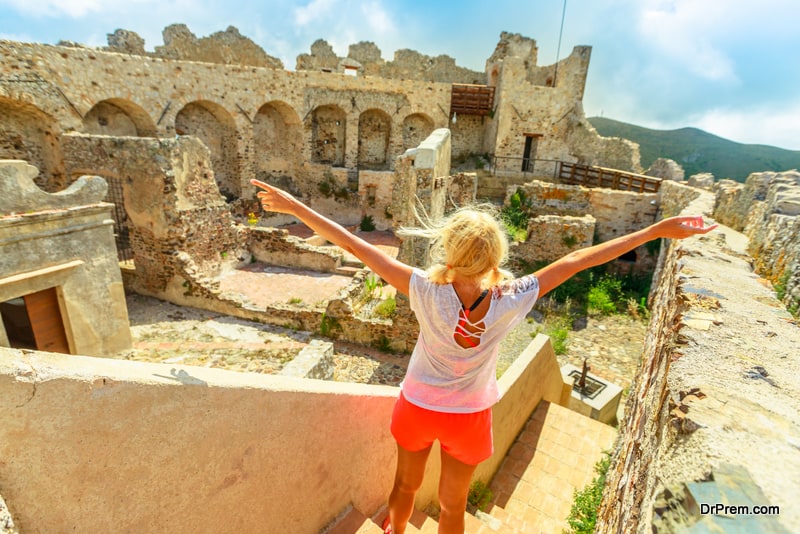
Talking about components of cultural tourism, the subject remains incomplete without a mention of ‘pure, authentic and concept of pseudo culture’ touching the issue. The tourist spends money on what is genuine and truly representative of the country he has visited. No one likes to taste what is not indigenous or imported from a foreign land. However, fusion culture, fusion art and music are altogether a new concept adding an exciting dimension the concept of culture. The borderline is delicate. Distinction between fusion culture and shameless imitation of something alien which doesn’t suit the local vibes has a clear and ugly revelation.
So the catch word is be what you are and do not put on false pretensions of what you are not. This realization is possibly the life blood of cultural tourism and a component of prime concern.
Countries promoting cultural tourism
Among the countries promoting cultural tourism, the Italian tourism ministry has come up with much hype. Based on the country’s rich heritage in art and culture, it is a universally accepted fact that a major part of the world’s culture and heritage owes its origin to Italy. As the Italian tourism has named it, the ‘magic tour’ is in fact a moving road show displaying the splendor of Italy’s wealth of art and culture in nineteen cities of nine selected European countries. It is a bit of marketing exercise to hype Italy’s image as a prime destination among potential tourists having a strong inclination towards art and culture.
Spain
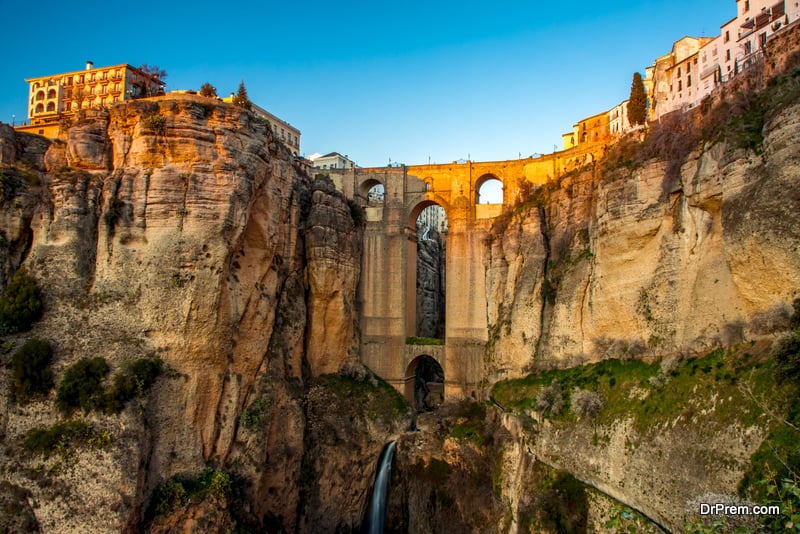
Spain’s promotional campaigns for making cultural tourism an attractive expedition have been commendable. Specifically the emphasis is aimed at promoting certain key areas by the Spain’s tourism department with necessary strategic measures. Lifestyle and culture takes a prime slot and next comes the nuances of the Spanish performing art and cinema. With thought provoking themes, the Spanish cinemas compete in prestigious film festivals thereby making the country a hot pursuit for movie buffs. Museums are a glaring indication of the diversity and richness of Spanish culture along with its historical monuments and artifacts. Legendary paintings are showcased with great care and organization. Efforts to make the Spanish language popular are in process.
Saudi Arabia

Saudi Arabia has great promotional campaigns for winning the admiration of culture inclined tourist. The country has rightly recognized its rich Bedouin tradition against a backdrop of hot desert, sand dunes, Oasis and the enigmatic melody which sparks a romantic atmosphere. The teachings and philosophies of Prophet Mohammad are the basic building blocks of Islam. The Islamic ideals are held high with reverence. Sincere efforts are made by the Saudi government in order to enable the Hajjis make a hassle free trip to the holy cities of Mecca and Medina, considered the holiest of Islamic pilgrimage. It is an inseparable and essential part of Islamic religion and culture. The hotels set up are luxurious with world standard amenities and good food. They offer a panoramic view of the Kaabah, the Haram and the Holy cities.
France

France is often called the fashion capital of Europe and is certainly a cultural paradise. A recent drive has been initiated by the culturally wealthy European nations. The term ‘Cross Roads of Europe’ has been the phrase promoting the enormous promise that rests in European legendary sites as a dream destination for those who have a culturally refined bend of mind.
Toulouse, in France, for example had launched the ‘Cross Roads of Europe’ promotional effort in May 2013. The target was set aiming the large business houses, stakeholders and art buffs. The genuine appeal and the priceless worth of the French traditional art, culture, murals and amazing exhibits of artistic value are carefully marketed. The promotional efforts are customized and delivered in a glamorous manner good enough reason that the tourists would die to be amid the French sites famed for art and culture.
Stonehenge Great Britain
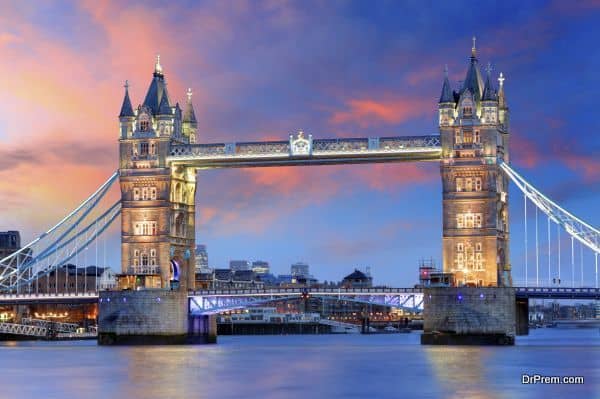
Britain commands a high position in the field of art and culture when put on an international ranking. National tourism marketing agencies operate in concert with the government. Aided by the ministry of culture, sport and media, these agencies go a long way propping up Britain’s tourism industry that heavily rests upon the country’s rich heritage in the field of art and culture. These agencies work in liaison with a vast partnership hailing both from domestic soil and abroad as well. The expedition dollars from visiting tourists keep pouring in. They strive hard to enhance the image of Great Britain and turn it into a hotspot for cultural tourism.
China
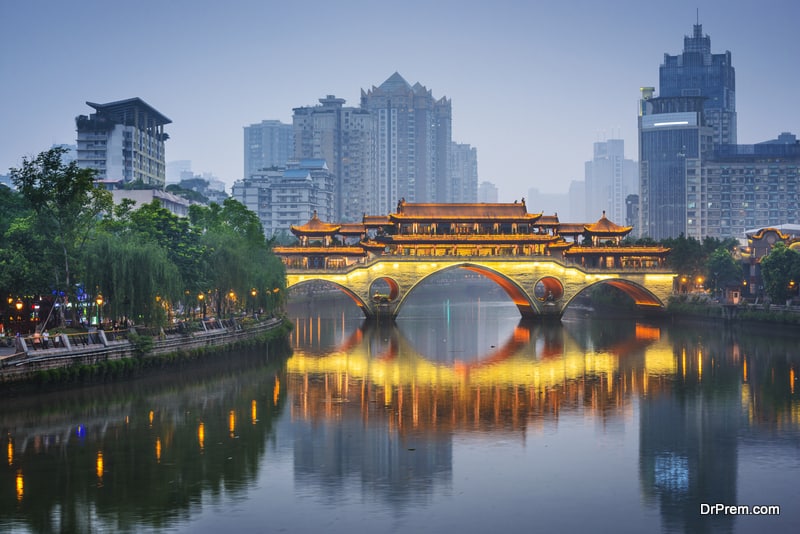
China is indeed a crib for one of the world’s earliest civilizations with roots laid firm in rich tradition and culture. The nation is well aware of its enormous cultural potential and has gone all out on launching promotional drives to draw tourists out on a cultural mission. China’s marketing efforts have been based upon expansion of global interaction, setting up and consolidation of time honored and cultural links with neighbors, a shared esteem for alien cultures and explore the common areas of cultural development together with the neighbor and foster progress in cultural tourism and give it a future.
Inter cultural meets and workshops are organized in participation with one or more foreign nations for promotion of tourism highlighting the rich cultural heritage of India and that of the foreign partner. One such cultural meet was held in April’2013 between India and Australia. Experts on museology and conservation of art, architects, sculptors and tourism officials gather around a vibrant intercultural interface where the traditions of both the countries were advocated. This kind of encouragement is quite in vogue and improves intercultural ties and the spirit of cultural tourism for that matter.
Precautions and prevention in cultural tourism
Seldom can an instance be found where you have a trip to the heart of cultural development abroad and all went fine. An unpleasant trip may haunt you back as a nightmare unless you take certain precautionary measures. One hard reality in a cultural tourist site is you will see a sea of humanity. Tourists, vendors, guides, movie shoot crews, painters and tramps all collected in a sprawling mass with varied intents. And there will be thugs, pickpockets and characters with diabolic designs. A deceptively calm atmosphere may hide a spell of turbulence, theft, a hold up or an event of terrorism at the worst end.
Carry little cash

First precautionary step in this direction would be to carry as little cash as possible. Rely on your bank cards. Displaying money, jewelry and other valuables or priceless antiques that you have just bought is not advised. Someone may be stalking you awaiting an opportunity. For field requirement, you certainly need to take out your camera but the word of caution still holds.
Choose public transport

It is safer to move around on a public bus, tramcars or in intercity trains. There are instances of cab driver pulling up at a lonely place and surprise you with his evil intents. Do not be surprised by his team of accomplices mobbing you in a jiffy. After all, the place is new and you are a stranger. You show indications clear enough to set you apart and open to a burglary induced threat. Avoid returning back to hotel late night and try to stay clear of the backstreets and deserted alleys. Same caution rule applies for stopping by indigenous booze joints just out of curiosity.
Have information about the local police station. Try and get the phone contact of the local police station. Else you may repent for not having the police contact in case of any emergency. Avoid making friendship with strangers and giving him your hotel address. You never know his motives until you find it out to your distress when it is too late.
Be selective in eating

When you are visiting a mela (fair) in India, it is a sort of carnival featuring cultural exhibits including amazing puppet shows, folk dances and wonderful indigenous crafts. You will be tempted by the awesome aromas of local delicacies cooked open under the sun and offered on sale. Seriously enough, observation of hygiene is a big issue. Consumption of those food items may cause a health disorder. You are advised against buying such food.
Show your respect

While on a cultural trip, do not ridicule any public show. They may appear funny to you. They definitely are held with high regards and respect among the locals.
Take necessary health precautions

You may be inclined towards tasting the wild flavor of the cultural delights of a primitive society. They are scattered all over the world. Santhals and Bhils of India, Dayaks of Borneo and the primitive tribes abounding the Amazon rain forests are just few examples among many. Spending a few days among them would make you susceptible to jungle mosquito bites among other potential hazards. An answer would be to carry mosquito repellants.
Beware of pick pockets and petty thefts

In Rome, pickpockets have taken their profession to a level of art! Locally they are called surgeons. Their expertise in getting access to your wallet is neat and precise. So while in Rome out on a cultural tourism, be on guard! Florence probably ranks second for the notoriety of pickpockets and purse snatchers.
Important documents like passport and credit cards to be securely stacked inside a travel pouch and make it a point to hide them beneath clothing. Distribute credit cards between you and your partner co- tourist so that if a disaster strikes one, the other still has it intact under possession for use.
Before departure for your destination, get a photocopy of passport and credit cards. Note down the foreign contact on the card for reporting theft and loss. Another common ploy in Italian heritage sites is someone holding up a board before you with glowing inscriptions on display. This is a deceitful trick to divert your attention and disrupt your alertness. While you are focused on the board, you won’t even know when a kid had tiptoed in stealthily with his focus on your wallet. Just a few seconds and you are done for! Put your concentration on yourself instead of someplace else.
In a nutshell, while on cultural tourism be down to earth and alert. Use common sense and never get swayed by the romantic air that may have gathered around you inspired by the art and amazing monuments surrounding you on all sides.
What is cultural tourism?
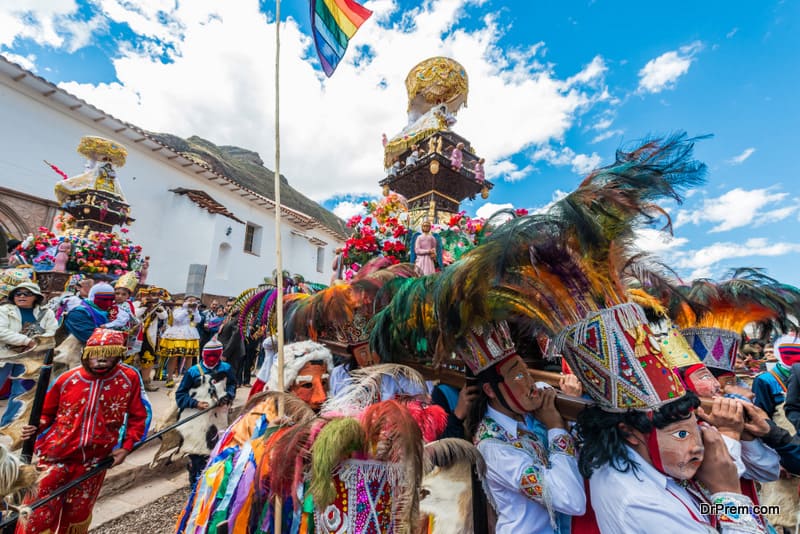
Cultural tourism embraces activities of tourists visiting distant lands with a view to appreciating and absorbing an alien culture. In a way it is a one- way traffic in the sense that the tourist is left enchanted by his cultural exposure offered by the guest nation. Next, it is the turn of the guest to do his bit.
However, cultural tourism must never be taken as a mark of formal gesture, a counter response rounding up the cultural quest completing the circuit. Neither are the exchanges in the field of art nor the intercultural swaps timed to a regular and rhythmic pattern. It all operates at random as soon as the tourist sees an opportunity he sets out on a venture abroad.
Driven by a fiery passion, he puts in his heart and soul in an effort to explore the cultural wealth an alien nation has on offer. Culture pertaining to a nation has a wide connotation. In fact, culture boils down to a specific trademark by which a nation is identified.
The literary contribution and priceless work of art and artifacts, the fables, epics, dramas, music and dances, specific schools of sculpting and architecture are all manifestations of art and culture of a nation. It truly represents the philosophy inherent in the way of life of its people and keeps the visiting tourist engrossed seeking for more.
Cultural tourism expands mental horizon and enables the tourist for healthy cultural exchange. The tourist is literally charmed when he wakes up to the existence of a fascinating alien culture just across his nation’s border he never knew. Richer the cultural platform of a country more would be its tourist appeal. It is that sustaining engine that keeps the pulse of the tourism industry ticking pulling tourists in waves with an insatiable appetite for cross cultural exposure.
Cultural tourism takes care of trips to cities and metropolis. Focus is centered on the historic or large cities and their cultural milestones like monuments, museums, concert halls and opera houses. A slight departure with an exciting twist would be to explore the local ruins. These stand as reminiscences of a rich and ancient civilization often put under the supervision of ministry of culture and declared heritage sites. It includes trips to a rustic locale as well displaying legendary rituals and festivals having their roots in antique myths, fables and folklores.
That money flowing from cultural tourism outmatches other forms of tourism is a ground reality backed by verified data. The part the cultural tourist shares in promoting a region’s growth cannot be overlooked. A cultural tourist is largely a consolidation of one’s own cultural uniqueness. By absorbing every crumb of ‘out of the ordinary’ ethnicity from an alien society, he plays a major role being a promotional tool for cultural tourism.
The mind blowing monuments, towers, amphitheatres, art galleries and museums of Europe have a terrific impact on the visiting tourists. The experience and knowledge of the tour guides keep the tourist mesmerized. They practically stand open mouthed absorbing every bit of detail. The feat is astounding, the inlays enthralling and sculptures throb with life!
Legentary paintings on a wide range of subjects are a lucid revelation of the master’s depth in the subject! Magic strokes of his brush and the choice and assortment of pigment conjures up sheer delight. Cameras go on in an incessant assault of flickers! The atmosphere turns vibrant with fragments of conversation bordering on amazing achievements and cultural exhibits leaving the tourist happy that his vacation dollars were well spent.
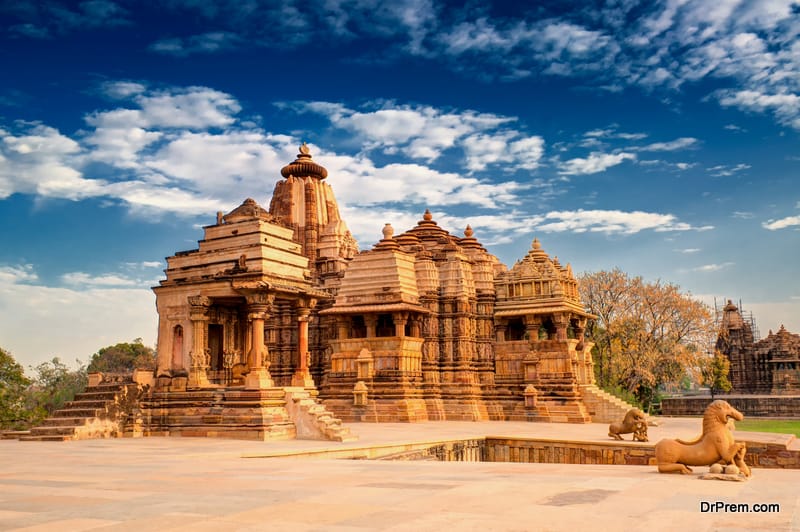
The erotic art temples of Khajuraho and Konarak in India speak volumes of the rich cultural heritage. It clearly depicts not only the mastery of the sculptors on his trade. It is a wonderful testimony to his knowledge and an in- depth feel for the subject! On similar lines, the incredible Buddhist pagodas of South East Asia and the Egyptian and Mayan pyramids catch the interest of the tourist with a powerful and hypnotic charm.
In a nutshell, cultural tourism is more than just touring a country for the pleasure of the trip. It is a brilliant sojourn into the territory of a foreign culture. It expands the finer side of human mind endowing it with intellectual wealth!
History of cultural tourism
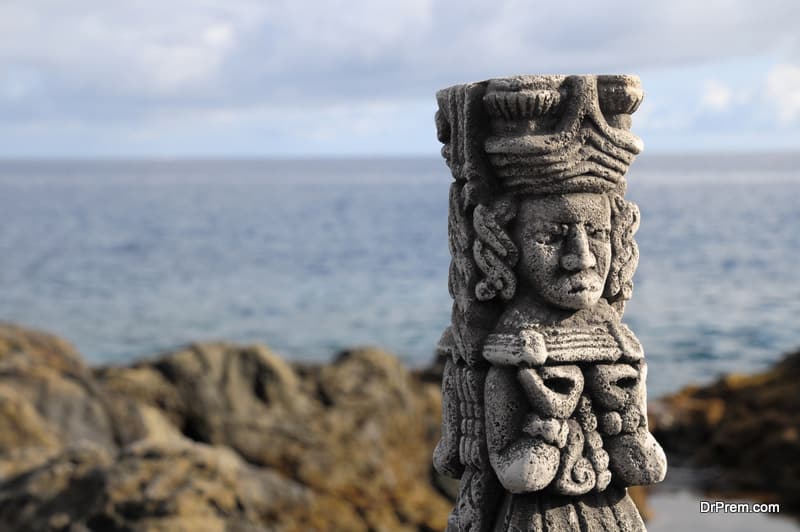
The cultural wealth of a nation has fascinated his neighbors past several decades back when they ventured out in quest of knowledge about foreign culture and traditions. The Spanish and the Central American Mayan cultural contacts and conflicts dates far back into early 15th century during the expedition of Christopher Columbus.
The discovery of the new world Mayan and Yucatan culture and art has been legendary. The Mayans were a highly cultured society showing a mastery over mathematics, astronomy, architecture and medicine. Meso Americans and Mayan’s were master weavers, craftsmen and potters. Mayan pyramids were a marvel in the field of architecture. Their intricate designs left the Spanish explorers wonderstruck. Mayan engineering feats and their mastery over technical aspects of constructing temples and other places of public gathering were mindboggling. Equally gripping was the cult of human sacrifices, which however repelled the Europeans. Monuments were in fact sacrificial grounds were human beings were slaughtered on the altar to appease the sun god. Gods, according to cult belief, blessed the people down on earth with a booming harvest.This horrible cult shocked the European world. Later there had been multiple contacts between the Spaniards and Mayans. The fabled gold reserves of the Mayans lured the Spaniards. The Mayan culture was eventually suppressed under Spanish dominance and ultimately faded in oblivion.
Although the Mayan-Spanish cultural meets ended in a destructive clash, it all was a product of an expedition historical enough and culturally motivated. Spanish expedition to the Inca civilization and culture perched high up in the South American Andes has historical significance as well.
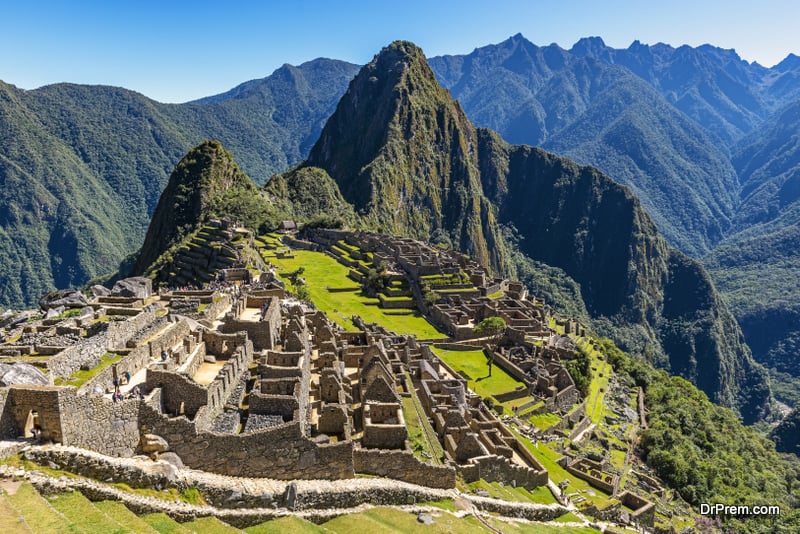
This expedition by the Spanish was also a 15th century venture. The Inca culture, artwork and language received a major blow from the Spanish invaders. The traditional Inca civilization was razed to the ground, their indigenous artwork altered and fused with Spanish flavor. Influence and imposition of Christianity on the Inca people was pronounced in the local art. Themes from Bible replaced the indigenous Inca designs. Local language and hieroglyphics gave way to Hispanic language, which spread far and wide over time. It has become the dominant language in most parts of South America. A cruise across the Mediterranean and one rich culture finds another much to its delight and admiration. The fusion of Greeko- Roman and Egyptian culture is an intercultural and intellectual interaction before the birth of Christ. The intellectual exchange of thoughts and philosophies happened between these countries whose reflection is seen in their monuments, temples and artwork. Exchange of philosophies moved across leading to the adaptation and enrichment of cultures which would not have been made possible if cultural tourism did not exist in those days.
Ideas of life and death and life after death had a special significance in Greek, Roman and Egyptian cultures. They sailed across the sea with ships full of thinkers, artists, philosophers and social reformers and explored into the wonders of culture, rituals and customs the other nation had to offer and eventually the seeds of cultural tourism were planted.
In the first quarter of 600 AD spilling over a few more years, there was a legendary cultural expedition originating in China moving westward towards Middle East and Turkistan and finally culminating down south in the Indian subcontinent. The exploration which was essentially an intellectually driven mix of a religious and cultural quest was focused around Hiuen Tsang, the eminent Chinese monk and a scholar of profound wisdom. Although it was a solitary cultural quest, Hiuen Tsang’s journey to the West and India is a milestone in the history of cultural tourism. His travel through Turkistan, Persia, Khirgistan, Peshawar and finally into India where he came in contact with the heavyweight advocates of Hinduism and Jainism satisfied his fiery academic pursuit. He studied intently the scriptures upholding the virtues of Buddhism according to the Indian school of thought and philosophy and furthered his knowledge and cultural enlightenment achieved abroad. The amazing fact that crowns his cultural exploration feat was he did all the travel on foot!!! The legendary voyage of the Venetian merchant Marco Polo to the fabled Mongol empire under the Great Kublai Khan is documented in history as a mammoth, first of its kind by a European to Central Asia and the Far East and his awesome exposure to the weird and yet an amazing culture awaiting him and his team including father and uncle.
Why cultural tourism matters
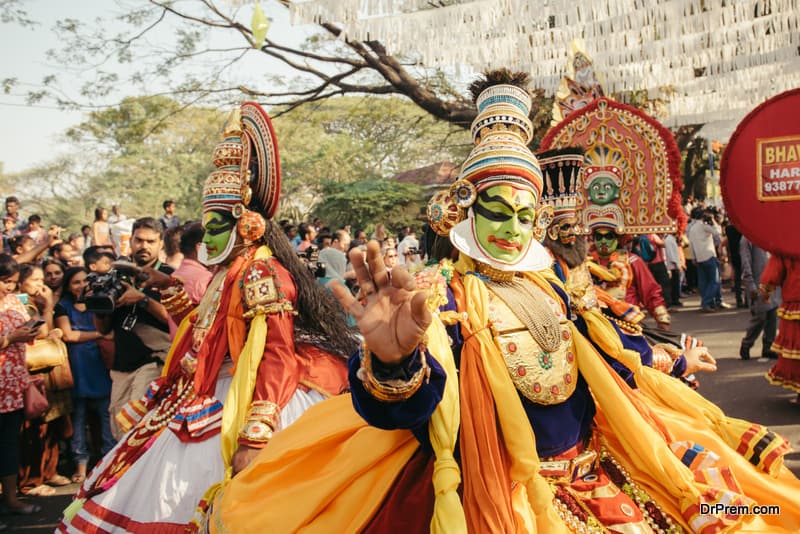
As we are social animals, we cannot afford to stay cut off in isolated islands. Moreover, as we are endowed with intellect as well, we need to interact with other members of the society both alien and local to feed our intellectual needs. Cultural tourism provides a gateway across which we get the necessary feedback on our cultural quest.
Tourism connected with a constructive search for alien culture as in other niche areas is a breeder of money. It consolidates the economy of the host nation, generates employment, mobilizes funds of upkeep of sites of cultural landmark, helps oil the wheels of local business in and around the historic sites. It makes the tourist happy acquiring money’s worth of pleasure. It commands a significant share in the tourism industry. It keeps all connected with cultural tourism happy and highly interactive. This is something beautiful and goes a long way quenching our passion for needs higher than that of just food, clothing and shelter. Knowing a culture beyond the border of your nation is like knowing your next door neighbor.
In absence of this awareness, we find it hard to move ahead. Besides, cultural tourism has an immense educational value. In Paris, the fashion capital, a centre for perfumery and a renowned cosmetics centre, the fiery obsession to be the leader in the world of chic style setting benchmarks had taken the world by storm. It is an eye opener for the fashion world to be conversant with the vogue and culture of the French that rules the roost.
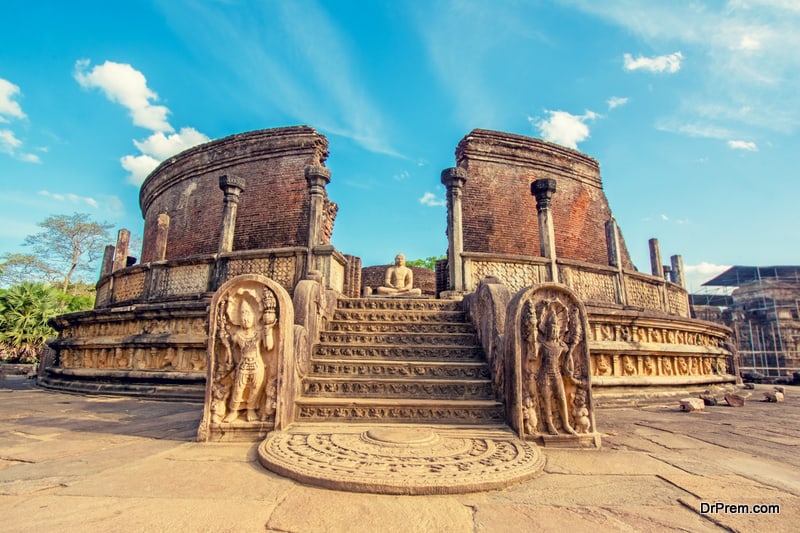
Tourism itself is global by character. Working in this sector initiating its growth would obviously mean coming in contact with people nurtured in a very different background and from diverse culture. You cannot afford to be blind to their ideas and preferences guided by a different cultural essence altogether.
It is in fact a cerebral highway for a two -way traffic. The cultural swaps that you have form the core strength of cultural tourism. However, it is not always the bright and happy picture that cultural tourism brings forth. There are rivalries and attempts to impose cultural supremacy, exhibition of flaunts and derisions and a share of other necessary evils to go with it.
But, refinement in culture will not see the day of light unless put to a competitive test against other cultural benchmarks set by alien nations with well attained sophistication and cultural backgrounds. Cultural tourism exposes the tourist and his family to edification specifically the accompanying kids with an impressionable mind. They are keen observers and often found surveying relics, monuments and the inscriptions on display and museum exhibits with rapt attention. This is a colossal value adding exercise, which the confinements of classroom teaching fail to impart.
Visual impacts are instantaneous and profound. And to cap it all, presence of a resourceful guide would work miracle. Your children would learn a lot from field experience and cultivate a distinguished attitude towards life which is in fact a product of good culture. Mostly, it is our probing mind and inherent appreciation for creative beauty all set to uncover the secret wonders of an alien culture that upshots in cultural tourism.
Like food and water satisfying our physical needs, cultural exploration meets our academic needs. There is much truth in the notion that cultural tourism provides the right kind of fodder for our intellectual appetite.
Key drivers of cultural tourism
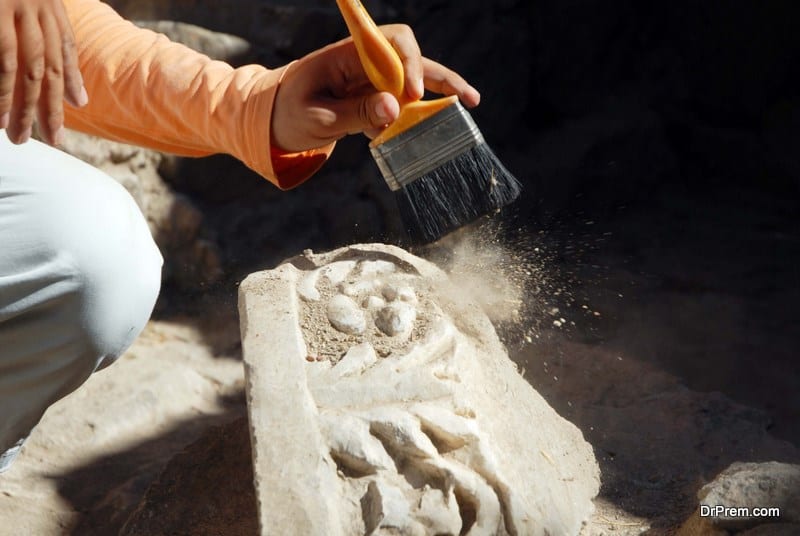
Accomplishments of cultural tourism rest heavily upon certain key factors the significance of which cannot go unnoticed. The prime aspect for making cultural tourism a much sought after venture lies in the attitude of the government and tourism department and their continued patronage. The government of a country generally upholds the cultural value of a nation fostering its tourist worth. Cultural achievements seen by a nation down the ages are not only a historical reminder of its rich heritage and feats, but also is a subject of great contemporary interest among tourists.
Archeological departments lend a committed and untiring support preserving the historical monuments and ruins and put an amazing display of the relics of ancient culture, works of art and architecture for the world to see. This is done with painstaking efforts and meticulous precision and patience. How well do these departments succeed in managing these ‘World heritage sites’ as these awe inspiring evidences of primeval culture are often termed as plays a crucial role, catching the penchant of the tourist and all the rage that follows firing up the passion of the tourist’s cultural quest.
This is undisputedly a key driving factor for promoting cultural tourism and making it a popular getaway among tourists turned on by cultural wonders. The part played by an efficient and qualified cultural tour guide is imperative as well in making cultural tourism a sure shot winner. The role of an efficient guide is like a rudder in a cruise ship in absence of which the ride cuts across an aimless track. The subtle nuances are well explained and the finer details of an exhibit touched in depth. Without the invaluable service of the guide the tour exposure goes bland. The tourist just draws in a fraction of ecstasy in terms of his hard earned dollars.
Whether the cultural displays a country has on offer worth a visit is certainly a deciding factor. You cannot fool tourists on a fairly large scale offering them peanuts when they have paid for cheese sandwich. The appeal must well worth its reputation. The tourist shouldn’t feel they have been taken for a ride.
Apart from the mainstay in cultural tourism, the ancillary units and infrastructural setups that grow around connected with the main attraction must be supportive .Congenial atmosphere, attitude of the locals, a trusted transportation network, good hotels and eateries are bare minimums. Existence of a fair law and order system with tourist grievance redressal cells are important factors too.
One very important driver of cultural tourism is the continuous innovation and constructive ideas that should come up from an advisory board. The board should include scholars, academicians and cultural gurus drawn from various disciplines in art and culture. With their intellectual contributions, they must constantly strive for making the culture tourism sector of a nation more and more appealing.
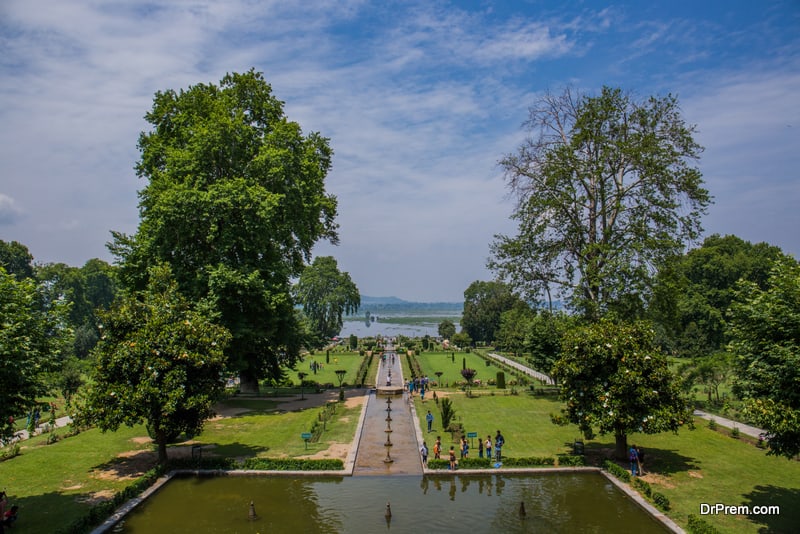
Exquisite Mughal gardens in Kashmir landscaped by the Mughal Badshahs are absolute legends. These ancient landmarks of art and culture command a powerful tourist draw. Pioneering ideas are instilled by the department of tourism, art and culture. The environment inside the Mughal gardens comes alive with mechanized tricks of light and sound. Visitors are enthralled when they are exposed to dummy voices of Badshahs with the magic of lighting effect flickering on and off .The ambience have a pleasant tone, birds twittering and resonance of flowing cascades splashing against rocks .Every bit of hum and jingle is played over the public address system!
You get a feel as if you have been transported back in time with celebrated Mughal rulers from the past occupied in fragments of live conversation. This is just an example of what a wonderful magic an innovative step taken by department of culture can have on the prospect of cultural tourism. This definitely is a key driver promoting cultural tourism worldwide.
Last but not the least, the huge mass of prospective tourists, their attitude and interests play a decisive role in giving a finite shape to the future of cultural tourism. It is his instinct that has motivated man to rise above his basic needs of food, clothing and shelter. Having met his fundamental requirements, he realizes there is much to achieve in life than the bare necessity of just staying alive. He strives upward towards fulfilling his intellectual needs, and here is exactly where the enticement of cultural tourism fits in. Attitude of the tourists justifies it to be the most authoritative driving factor of cultural tourism.
Is cultural tourism for you?
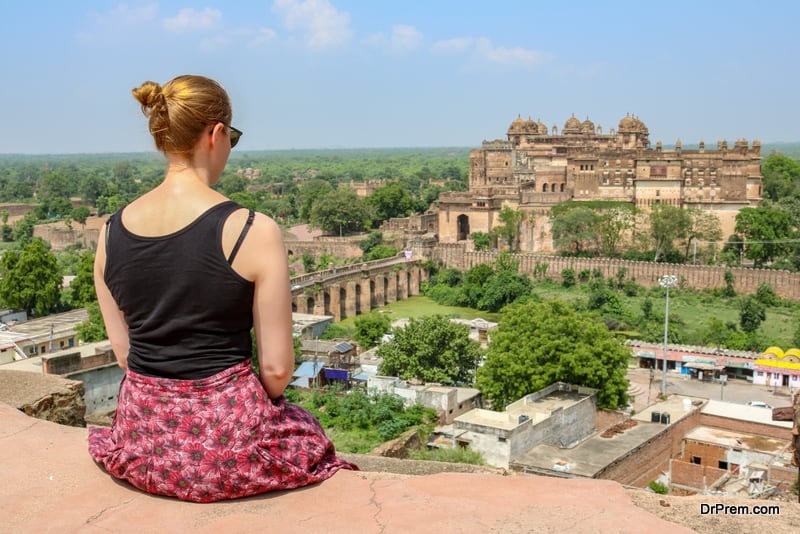
The immense pleasure drawn from cultural tourism is a well accepted confession. We all feel a driving need to rise above meeting our fundamental requirements just to survive through a day. Struggle for survival is a naked truth. But that is not certainly the only foundation on which our quests and aspirations are built on. Our intellectual appetite is powerful enough to make us feel unfulfilled and incomplete if not properly fed. The countries far and near holds a cultural treasure trove.
Their traditions are rich having been carried down generations, the rituals are religiously observed with alterations with a touch of polish where needed. Exposure to a master painting will unquestionably inspire the artist in you as would a piece of pizza do to your gastronomic desires.
‘The Last Supper’ by Leonardo Da Vinci is an awe inspiring legend. The painting is meticulously preserved by the Italian art department .Painstaking efforts have gone in depth with the restoration work perfected. What you see at present of this master class piece of art is in fact a departure from its original tone. Age and erosion had its toll on this medieval painting giving off paint flakes here and there. Hence the need to restore was imperative. Repeated brush strokes and touch of pigment brought about a few alterations, but the spell is nevertheless mesmerizing.
Connoisseurs are restricted to close in beyond a point that their body heat may cause irreparable damages on the immortal artwork. It is a life time achievement to witness last supper and is a wonderful hold on tourists of every description.
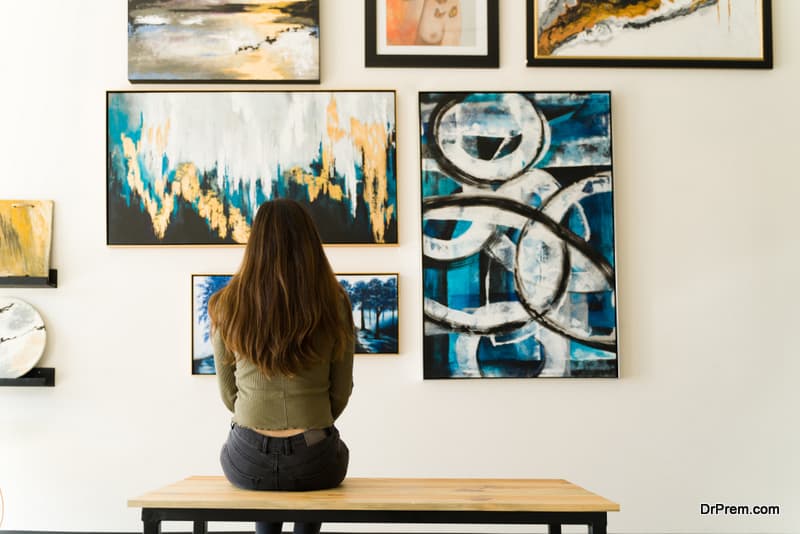
This 15th century mural housed in a convent in Milan is a cultural delight of enormous proportion. And so is the famous portrait of Monalisa by the same master. This canvas of eternal beauty is thought to be the most illustrious painting in the history of art. The smile on the lady’s lips is the most enigmatic feature having a wide range of connotations offered by admirers. Another striking feature that keeps the art lover engrossed is the accurate sense of proportion achieved in this painting of large physical dimension. Did the artist move back and forth to achieve the balanced scale or was it a manifestation of graphic art. The inner vision of Da Vinci’s work with his magic fingers, the sense of proportion and geometry and eventually his selection of pigments all focused into excellence and an art prodigy is born! Missing out on this marvel would be a great loss leaving the artist in you disgruntled.
Cultural tourism for you would mean a vast exposure that adds value to your intellectual wealth. The Japanese Kabuki dance dramas are quite famous and stylized, featuring intricate make ups and outlandish masks worn by performers. It spells sheer magic and the same enchantment holds you in a wonderful grip when you experience the tribal Chau dance or exotic Naga dance of India pouring in loads of pleasure.
Dance dramas enacted in ornamental stages in Thailand, Bali and Cambodia calling back scenes from the legendary Hindu epics is a source of pure joy. It leaves you complete and satisfying on your cultural mission. Attending film festivals and book fairs across the globe keeps you updated on contemporary values, attitude towards life and the society, different socio cultural issues and cultural adaptations, beliefs and philosophies having a profound impact on the social ambience of a nation. It pinpoints exactly with fair precision the coordinates of your existence with reference to the above parameters and is certainly an eye opener. Alien and exquisite cuisine and their style of preparation, adorable pieces of art and sculpture, woodwork and handicrafts, dress material and specimens of local folklore sanctified by print all speak of the cultural fabric and the immense measure of beauty that goes with it is well worth a bite.
Interaction with people exhibiting cultural sophistication is a wonderful experience. Their style of dining and consumption of drink is a plain indication of their graceful attitude towards lifestyle. You can’t help feeling elated to be in the company of such an elegant society abroad and is sure an accomplishment in your cultural tourism expedition. Someone in the US, once made a statement “If you wanna go on a trip to Japan, you have two options. Either you visit the country or you may opt to stay back and wait for a month. Japan is at your doorstep”. This is basically the other way of saying Japan is a month ahead in terms of technological growth. The culture of the country rides high on the use of gadgets and gizmos. Response of a nation to the high tech world and be the leader is a cultural acceptance.
The exotic world of Japanese toys most certainly fascinates you. You would die for a sample of an electronic plaything for your kid. This is indeed a feat that you carry a model back home, an apparent revelation of the level of technical progress that the culture of your tour destination has embraced with open arms.
How to get more information on cultural tourism

Cultural tourism is one of the most popular and common niche. A major chunk of the tourism sourced revenue can be traced to cultural tourism so sources of information on cultural tourism are plenty. The frequently asked information on cultural tourism revolves around the basic questions like:
a) Where to go?
b) When to go?
c) What to see which includes an elaborate detail of features and landmarks of cultural significance that is going to fascinate a tourist bent on a cultural exploration.
d) What are the modes open for getting a hassle free access to that destination?
e) What are the tourism arrangements available to make cultural tourism happen and at what price?
It is obvious that internet is the easiest and fastest access to information. However, a lot depends upon your search techniques, which are a bit tricky. Answer to the question you have fired comes accurate and precise depending upon how effectively you have engaged your search engine. Ranging from the availability of hotels, seasonal rush, tariffs, a view of room interiors, transport arrangements, heritage sites, art galleries, museums, stage shows, book fairs, dance programs and symphonies all come at the click of the mouse and appraise you of the worth of exposure you are going to acquire on a cultural trip in exchange for your hard earned dollars. Information from trusted sources and the gripping appeal of presentation are instrumental to inspiring you with the desire to pack for departure.
Illustrations play a role in infusing life into a collection and compilation of data based facts, which would otherwise leave a bland taste in your mouth. Besides, there are tourist information centers representing various countries. They are set up in an interactive network across big cities around the globe. They help propagate global cultural exchanges through tourism. A broad range of activities are covered by these information centers for promoting cultural tourism. They are great organizers as well holding cultural events and setting up reception facilities for valued customers including overseas delegates. They market cultural swaps and organize international cultural forums and tradeshows. One of the most important functions of the tourist information centers borders on aggressive marketing, which is something more than just providing a set of facts and figures. They encourage clients to visit their country and have a wonderful experience of traditional and cultural wealth. They supply free texts and brochures featuring the highlights of the nation’s cultural wonders and the most historic and awe inspiring monumental feats traced back to a specific school of art and architecture.
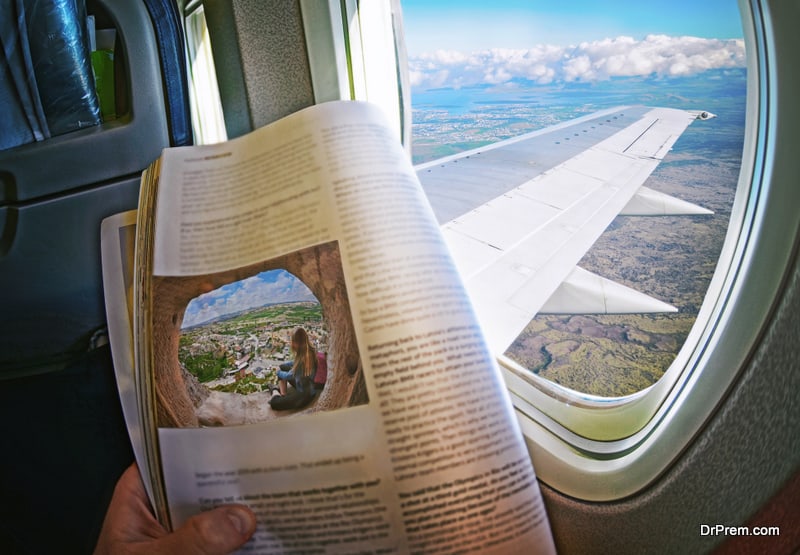
Leading magazines like National Geographic and other travel culture magazines are in roaring circulation and have become tremendously popular among cultural enthusiasts, art lovers and global explorers. These magazines have an enormous potential in educating and inspiring the tourists with valuable information and educational input on cross cultural interfaces. These updates drive them to explore the world, and have a profound and first hand field experience on alien cultures just across the border of their countries and far off places.
The objectives of these informative magazines are to bring an all-round awareness among tourists about alien cultures, appreciate and accept their exclusive features so that eventually the global cultural harmony is established. Several online magazines exist, which helps the tourists with latest updates on cultural tourism. They provide an in depth studies touching finer nuances relating to culture, tourism and hospitality. They strive to bridge the intercultural gaps so that flow of appreciation from customers surmounts all cultural barriers. One culture learns to get a glimpse of the hidden treasures embedded in the other. There are global organizations and intercultural exploration clubs holding periodical forums and meets. Their interactions are vibrant, resourceful backed by trusted data.
Areas of cultural interests, art and architecture, music and culinary practices existing in contemporary cultures are discussed in depth and detail. Latest updates and developments come under limelight, feeding the enthusiasts with all the inputs he needs to make his cultural quest see the light of the day. Getting information and more of it comes in quality packages. The flow is at galore. Information just needs an inquisitive mind with a thirst for cultural updates to engage in a sincere effort based search and tap the huge potential latent in every bit of it.
Importance of planning in cultural tourism

Cultural tourism can become a wonderful piece of experience depending upon how well you plan the trip. Having decided on your destination, you got to plan selection of the sites featuring cultural excellence. You tour program must be time bound and you meet your itinerary timed to match your target sites. If you are on a self guided cultural expedition, your plan premises become a tougher exercise. You need to contact with the hotels and book a room. Internet search engines coming at a mouse click help you in your enterprise.
Your next move would be to have the latest updates on the network of transportation services that will take you around the cultural sites, monuments, museums and art galleries and drop you back to your hotel. Tariffs and prices ruling the market should be collected for estimating your trip expenses, which is perhaps the most important component of your tour plan. Without a lucid estimate of the financial outlay you won’t be able to move an inch.
If you can keep your trip plan well ahead of your actual departure, you got to reap benefits from ‘early bird discounts’ on your flight fares. However, your departure schedule cannot alter. Planning your tourism would mean fixing a rudder atop your cultural cruise. Without this guide, you are certainly going to find yourself in a big mess waiting at the end of your aimless venture.
The company you have on trip is important. Plan to have people with appreciation for culture. Even if you prefer to be a loner, take your fiancé, you will have a great time amid romantic settings, ruins and ancient monuments echoing off whispers from the past. It would be packed with thrill reminding you of the worth of every dime spent and efforts put to planning!
Exposure to cultural tourism most assuredly enhances your intellectual potential. The need to retain what you saw and heard in and around exposure points is crucial. Apart from your camera capturing visual records, what your entire learned trip guide had to say needs preservation. Plan to carry a voice recorder. This will be of great help after the trip is over.

If you have decided to make your trip through a tour operator, your planning would be taken care of nevertheless, still you need to plan on certain issues on personal level. Importance of the right selection of tour operator or agency is evident. Based upon the credentials, you should choose the operator. Get yourself updated on the operator’s package fee. This will figure in your master budget of your trip expenses.
Prior to your cultural tour, it is very important to decide on carrying fund for expenses. Trip through operators would mean you need to pay before. Therefore, the need to carry huge volume of cash is diminished. However, try to carry as little liquid cash as possible. Carry debit and credit cards instead. It would be a safer option.
Planning your tour in the right season is important. Cultural events and ethnic festivals are generally timed during a particular month. In India, several cultural meets and ‘ melas’ are seasonal. Gangasagar Mela and other folk festivals bring forth the traditional cultural shows. These are just amazing to watch, and you must plan your trip targeting the season to catch these rituals and cultural festivals in full flight.
However, planning is not enough. Setting unrealistic targets would land you nowhere. Draw up plans those are down to earth and feasible for cultural tourism. See that they can be implemented with ease allowing enough leeway for the unforeseen.
Preparations for going on cultural tourism
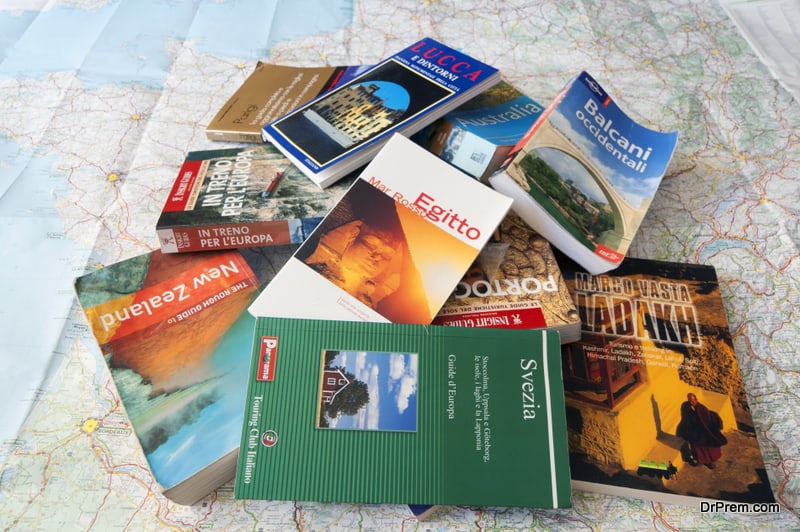
The tourist wakes up to a call one fine morning from a country famed for cultural tourism and packs his luggage. No the things does not work that way. Neither does his cultural juice collect overnight which inspire him on a cultural expedition abroad. Cultural tourism calls for a thorough preparation that would make your voyage and its memory settle for good. The selection of the destination, for example, is the starting point. Updates will be an important part on the specific attractions and amazing features that make your destination a Mecca of cultural tourism.
Next important preparatory step is to decide on the season when you would like to visit the place you have selected. Heavy showers would dampen the trip spirit, and certainly you would like your culture quest with the azure and sunny sky overhead with a slight breezy chill.
The internet information and reading material on cultural tourism can be your effective preparatory guide. You get accurate information as regards humidity, temperature, rainfall and other parameters related to meteorology to help you fix your departure.
Appreciating cultural tourism would require mental preparation. You need to set your mind in a frame. Having equipped with the outline of what to look for and what to avoid, you may do the exercise of locating a trusted tour operator with valued credentials. This is the second most important step after you have decided on the destination and kept yourself posted on its cultural scenario.
Next, you need to prepare for mobilizing funds in order to feed your trip. Budget takes a finite shape as you are updated on the services covered by the operator with the estimates of costs and tariffs. Take a stock of the inventory you will be carrying on your trip.
Camera and its accessories make an important part of your luggage as your bank cards keeping you liquid enough to survive through unforeseen disasters. Selection of the right kind of apparel would prepare you against severe colds and drizzles. Umbrellas and rain jackets may find a place in your gear list to avoid your trip from getting spoiled by a sudden spell of rain.

Stock yourself with medicines before setting out for a cultural expedition. Common cold, fever, digestion disorders may look innocent but menacing enough to ruin your mood set to explore the beauty of art and culture of the destination. Do not wait for getting the medicines once you reach the destination. Language could be a barrier defeating your search effort. Moreover, local medicines on which you have been tuned on since long would suit you more than its counterpart abroad.
If you are through a trip operator with wide service coverage, find out the payment options and get agreement terms clarified if there exists a system of refund in case their service falls short of what was promised.
Organize your travel kit, bags and suitcases. The luggage weight should not go beyond the limits set by aircraft authorities. Your luggage must not include any item making its airport clearance a failure. Wonderful works of art like jeweled and exquisitely carved knives and antique guns may be pieces collection worth tons of admiration, but they may fail security checks at airport. Your cultural tourism acquisitions may slip into confiscation by airport authority to your dismay. You should be prepared for facts encountered in cultural tourism. They need not shock or surprise you latter on the tour spot.
While touring Egypt, try to put on light colored garments in order to ward off radiation from the blazing sun. Sun rays can be punishing for your eyes and skin. Be prepared to carry a pair of sunglasses and sunscreen lotions to hot places like Egypt. You can beat the scorcher as well in the Mediterranean cultural hotspots like Italy, Greece, Crete and Malta.
Before launching your cultural trip, you may acquaint yourself with simple words of everyday use. You can appreciate a play on stage knowing at least the basics of the foreign language. This is where the dictionary fits in.
Preparation before actually going for the tour is of leading significance. It gives you a direction and shields you against annoying issues faced midway through your journey. It makes your trip organized.
Budgeting cultural tourism

Cultural tourism can get you in a tight fix unless you figure out a realistic cash outlay connected with your trip. In cultural tourism, the areas that punch holes in your wallet are numerous. Hotel rentals and bills on grubs together find a major share occupying your budget. Your flight booking expenses and local transportation costs would be major chunks as well. Plane fares would however depend upon the location and distance of your tour destination from your residence. However, it is advisable to book flight in advance to avail discounts. But in that case you need to stick to your departure schedule without deviation.
Amazing replicas of original works, artifacts and other works of art are great temptations! You are advised to make room for these masterpieces while drawing up a budget .These might sometimes turn quite expensive more than your hotel and dinner bills put together! You need to cut your coat according to the cloth as they say, and make sure you are not left with an expense overrun in an attempt to get your dreams realized.
Countries which are considered major seats of evolution of art and paintwork like Italy, France, Spain ,China and Japan to name only a few will have a wide and exquisite range of art materials and tools on offer. Assortment of pastels, oil tubes, water colors, sketch pencils, brushes, pallets and a number of other quality items would just startle the artist in you with inspiration and creativity. Since these art products would be branded by countries producing legendary artists, the appeal would multiply, and all these temptations come at a price. Expenses to meet the desires of your artistic side need a place in your master budget.

In cultural tourism, you need not spend much on pointless expedition gears like hiking boots and leather jackets. They just build up meaningless cost burden. Besides, in certain cultural sites temples and places of worship, wearing leather products is a taboo. This will make you feel awkward. It is better to invest on something light and yet sturdy.
Draw up your tour budget keeping view on expenses like camera, roll of films, batteries and accessories. If you plan for a large number of shots, go for a DSLR. Your camera is the most important gadget to record the wonderful exposure you will have in your cultural tourism. You are advised in favor of spending substantially on your camera.
Cultural tourism sites inspire your finer side waking up the artist in you, but that doesn’t keep you away from ground reality. If you are not alert, you will straight walk into tourist traps causing a drain out on your monetary reserve.
In big cities like Rome, money changers charge more than 10 %.This is unfair and expensive. Going on a shopping trip and have your money changed would be a better idea. You should replace hiring expensive cabs with train trips and bus rides as they are cheaper modes. However, you need to keep yourself updated on route coverage and timings.
Avoid taking snaps together with fake costumed gladiators outside Roman colosseum however enchanting might the idea appear. The photo pose comes at a price. You may find yourself in tussle with a present day gladiator if you refuse to pay gladiators fee, bringing back a flashback of ancient battles as his ancestor was hardened veteran. The best idea is to steer clear of the idea and save your money.

Do not buy drinking water from restaurants. Buying them from vendors would be cheaper. You need to set aside funds for tour guides fee, books and texts featuring authentic local culture and cuisine. You need to keep a reserve for medicines and contingencies. Buy medicines from your home town it is expected to be cheaper.
It will be prudent not to carry much cash. Better option will be bank cards from the angle of safety and would be a low cost option as well .Organize your budget so as to spread it over broad heads like accommodation rentals, transportation, food and wine, sightseeing, purchase of antiques ,paintings, books and other art materials. It is quite possible your expense forecast may overshoot in some areas. Offsetting savings must be found somewhere else to keep the overall budget within limit. Hotel rentals and plane fares usually become fixed. You do not have much to do about altering them. Options left open would be to revise and curtail other areas of expense like food and shopping.
Finally, it is sensible to draw up a realistic budget which would effectively guide you to have a great cultural trip and save enough money at the same time for a future expedition.
Travel and tourism arrangements in cultural tourism

As the demand for culturally famous destinations came under focus, the passionate drive to visit these legendary places mounted. Consequently, the need to have an organized tour operating industry emerged. The tourists thereafter saw a massive bloom in tour and travel arrangements across the world. One tour operator competed with the other offering the tourists custom designed products faster than their competitors could do. Competitions ran neck to neck pushing the quality of service well above the average. Operators ensured their reputation did not get tarnished and survived on a platform build out of good credentials and a proven track record. Updates and information on various global cultures were highly sought after targets which the tour operators needed to acquire to survive in the business. Travel agencies and tour operators specializing in cultural tourism are well organized and resourceful. They offer a wide range of services which are tailored to customer needs. They take care of your flight and accommodation booking, and you can also rely upon them for completing your passport and visa formalities.
Your travel insurance schemes and foreign exchange management are attended with professional expertise and speed meeting deadlines. Tour operators operate with enough competence in order to win the heart of the valued customer. Trips include flights, breakfast, lunch and dinner, accommodation and transport arrangement. The tour managers usually have a wide range of experience in the field of cultural tourism. Sometimes they are proficient in more than one languages pertaining to the destination in question. Sightseeing trips are organized as per itinerary. Generally, deviations do not occur unless compelled by altered circumstances.
For tours to places of romantic overtones with cultural appeal like Venice and Rome in Italy, Paris with its famous Eiffel Tower and amid the legendary pyramids of Giza in Egypt, you get a straight discount of around 800 Euros with some travel agencies if you are travelling with your wife or fiance. Visits to the second level of Eiffel Tower or on a romantic cruise across river Seine in Paris sailing past historical monuments and amazing architectural landmarks are organized with professional excellence. On a parallel note, visits to Roman Colosseum or to Alstad in Germany are taken care of with utmost sincerity and honestly designed customer care. The operators imbue an air of respect for alien culture whose roots run deep in rich tradition and history. Sometimes free fiestas are on offer and on the whole you achieve loads of gratification well worth the money you have spent on your travel agent for cultural tourism.
The tour organizer often offers you handpicked programs that are really well worth a try. The tour officers are extremely efficient. They feed you with prompt answers in response to your rapid fire queries and back you up with pre tour information. Big travel agents have wonderfully designed customized websites. They have E-brochures on display. The customer gets a comprehensive picture of what their cultural tourism would be like. They will have ample scope and feedback on the culture tour program before booking one with the travel agency.

Good travel agents are more than just service delivering efficient tour operators. They strive towards a concrete mission and firmly believe that lives of the tourists could be greatly improved through cultural tourism. Tourists are better educated through travel being exposed to the amazing cultural wonders various countries have on offer. Some of these agents have created a respected brand name for themselves in the tourism industry. Their untiring efforts and quality services have helped millions widen their intellectual horizon through cultural tourism. Respect for alien customs and cultures increased manifolds among the customer tourists. The goal of these travel agencies is to improve the quality of travel experience of their customers and at the same time perfecting their professional expertise taking it to a high level of excellence.
Travel agencies realize the value of your hard earned money. They see your spending potential from your view point and come forward with their experience based guidance to help you draw up a feasible budget. You get the optimum value return from cultural tourism for the money you have decided to spend. Resourceful travel agents have exclusively designed and well thought out cultural tour programs for you.
La Tomatina festival in Bunol, Spain and Brazillian Mardi Grass has a massive iconic appeal upgrading the wonderful features of a culture displayed with all pomp and color. Travel agents have custom designed itineraries for you. You can travel and very much be a part of the rich traditional cult merriment.
Best practices to be implemented in cultural tourism

Promoting cultural tourism is fine. The tourist influx to the cultural heritage sites mounts as does the financial reserve in the state treasury and the tourism department’s coffer flow with cash pouring in. However, a focus of concern concentrates on reconciling two conflicting objectives. Higher the number of tourists visiting the archeological sites for example, higher is the chance of damage done to the environment and the site in particular. The cloud of dust kicked up, the amount of carbon dioxide breathed out and the body toxics pumped into the air can cause irreparable harm to relics, paintings, murals and sculptures. The scale of damage is frightful when linked to a massive tourist influx.
However, the basic which may be a little wishful is that art lovers would be civilized enough not to smoke around digs, monuments and art galleries. If smoking by tourists advents the scene, the disaster is simply multiplied. Stringent actions have to be initiated by site administration in order to put a restraint on smoking tourists. Separate smoking booths to be set up for those poor souls who cannot kick the filthy habit!
Cultural sites and ruins of archeological interest should be attended with meticulous housekeeping. It is always a good practice to give a bath of water spray to keep the dust under acceptable limit. Plantation of greenery in and around ruins would not be a bad idea. However, the feasibility of the project needs a careful survey. Where ruins like ancient brickwork hanging loose with all its wonderful inlays on display may inspire an over enthusiastic art lover to make away with a loose of archeological worth and augment his private collection. Vigilance must be posted at such points in order to check commission of such art inspired theft. Besides, old and unattended ruins pose major accident threats. Proper insurance schemes would cover the cultural sites against pilferage, vandalism and other potential damages. Equally important is organizing a set up for fire fighting, flood control and other natural calamities which may be a menace all on a sudden.
Training tutorials for bringing up efficient and resourceful guides is an initiative drive expected from the department of art and culture. The guide must make his presence felt among tourists. A good and effective training would help the guide achieve the desired trait. In many cultural heritage sites, disparity in the entry tariff is a point of concern. Foreign nationals are charged much higher rates. The discrimination may be a part of the host nation’s economic policy nevertheless, it must not be glaring.
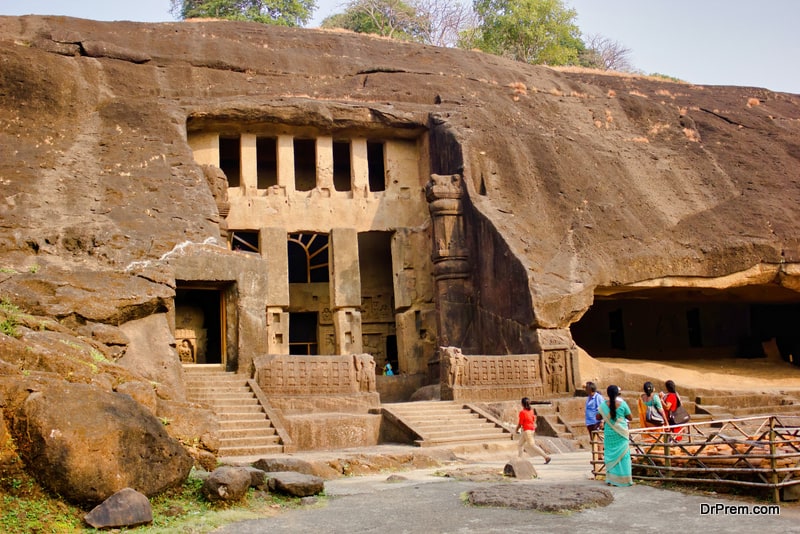
The museums, monuments and archeological ruins should be tourist friendly. Adequate information and literature are a must display requisite to get the tourists updated on the cultural importance of the place of his visit. Accurate information of landmark dates and major historical events along with its cultural significance should be highlighted for the tourist to be acquainted with the site. The importance of site maps and internal route direction cannot be overemphasized as is the need for tree shades.
Transportation arrangements should be comfortable and trouble free as exploration on foot across ruins and archeological digs could be quite long and tiring. Vehicle emissions to be muffled as the smoke would spoil the artwork and pollute the environment.
Money collected from tourist visits should find a constructive way out. It should be exclusively spent on upkeep and restoration of cultural heritage sites and the artwork it encompasses. No diversions to be encouraged. The allocated funds on improving the cultural image of a nation should be earmarked and spent properly for the purpose designed.
Participation by different nations in cultural forums is important. Ideas flow and swap. The methods directed at preservation of museum artifacts, paintings and monuments are discussed. The kind of support from government and the ministry of art and culture would act as a benchmark for nations aspiring to make cultural tourism a prime economic driver.
Do’s and don’ts in cultural tourism
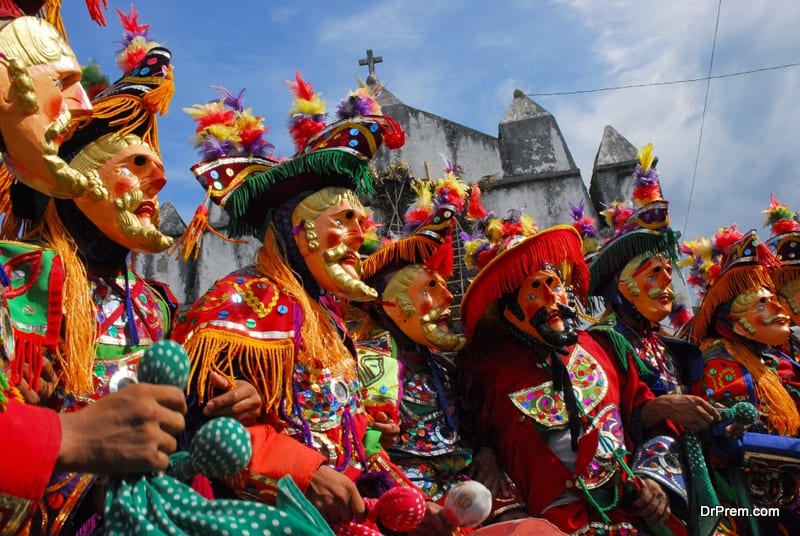
In a cultural tourism, it is important you show due respect to the culture of the country of your visit. It is quite possible that country has a language that may sound outlandish! However, that must not be a reason that you respond to the alien language with a gesture of ridicule. This is certainly a bad manner inviting resentment.
No matter how funny a social custom, ritual or a gesture may appear, you must not disrespect them to the displeasure of the alien society. You will be singled out and head for trouble. A gesture that you do not approve of may be an important social custom. Limitation of your awareness of other customs should never be a cause of discontentment between you and the people of the country you have visited.
When on a visit to a temple or a shrine or a sacred monument, it is normal to take your footwear off before entering. These places are regarded with a high level of veneration. As a mark of respect, you may see an opportunity to buy a bouquet of flowers or a pack of perfumed sticks at the entrance. These objects are considered sanctified, so wholeheartedly go ahead and buy some to offer on the altar. This would be a good gesture, a show of respect towards a foreign culture and highly valued custom.
Zoos and animal enclosures housing wild life specimen form a part of a country’s cultural, educational and entertaining niches. Great care is taken by the Government towards the well being of the animals. Some of the animals and birds have an important place in a nation’s culture. They represent a cultural icon like the tiger is India’s national animal as is the peacock being India’s national bird.
The Kangaroo and the Emu features in the Australia’s coat of arms, immense cultural sentiments are connected with these significant representations. Tourist visits to the zoos must refrain themselves from chucking pebbles at the animals or agitate them by other acts of cruelty. This would most certainly hurt the cultural sentiments of a nation and may well land you up in prison. Offense would multiply when the tourist poaches a wild animal for food or sale-able body parts. This would amount to a cultural crime. Needless to say, the tourist must abstain from conceiving such misadventures, which could put you in a real mess.
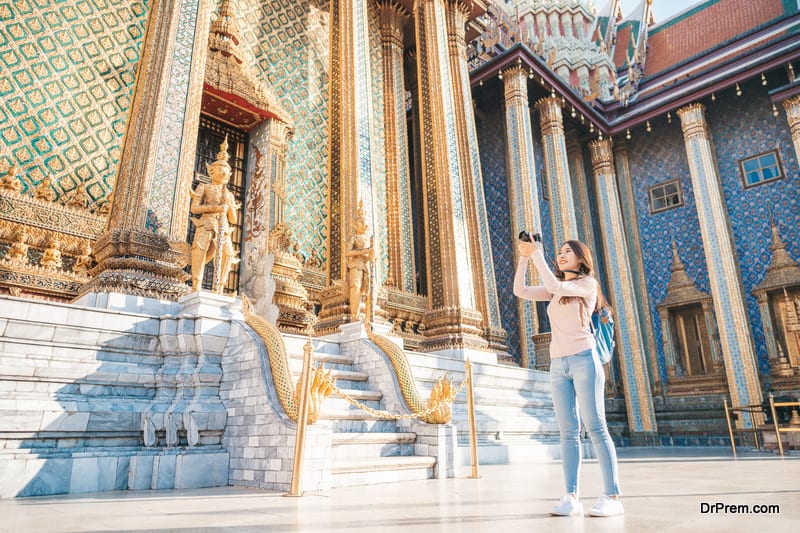
Figures of sacred deities in temples are often the source of temptations for photography. You may well be lured into taking photo shots of a large congregation attending a place of worship or thrown in a trance in an attempt to establish a communion with the divine. These passionate group activities and restraint social attitudes are a part of the culture and beliefs. Before hitting your camera shutters, make it a point you are not moving on to something that is socially disapproved and you are in fact encroaching into a forbidden cultural barrier.
Museums, art galleries and other monuments of significance are appealing enough. The products exhibited often entice you to physically touch the object. This is a prohibited act and could lead to prosecution. In some art galleries, taking photographs are banned. The flash may harm the pigment and the tone may well get damaged. In such cases, it is wise to leave your camera in its case and use it for outdoor sceneries. Let your eye do all the appreciation and send signals strong enough to augment your reserve of intellect.
Smoking inside places of cultural importance and art exhibits is an act of felony and you are advised against such crude acts of offence. Similar words of caution hold in case you are drunk and enter an art exhibition. Besides reeking, the booze plays on your nerves. Your words of appreciation and criticism would be devoid of measure and balance arousing public annoyance. Stay away from alcohol inside an art gallery; else you would be thrown out, inviting open disgrace.
When you are relaxed in an audience seat while attending a rock show or a symphony or watching a drama, a stage show or a cinema, keep your sense alert and try not to talk much and cause a commotion inside the auditorium. This would be a show of poor etiquette on your part and would be a clear indication of your own boisterousness.
The above are a rough sketch of the dos and don’ts while on a cultural tourism which would guide you through.
Things to do post cultural tourism
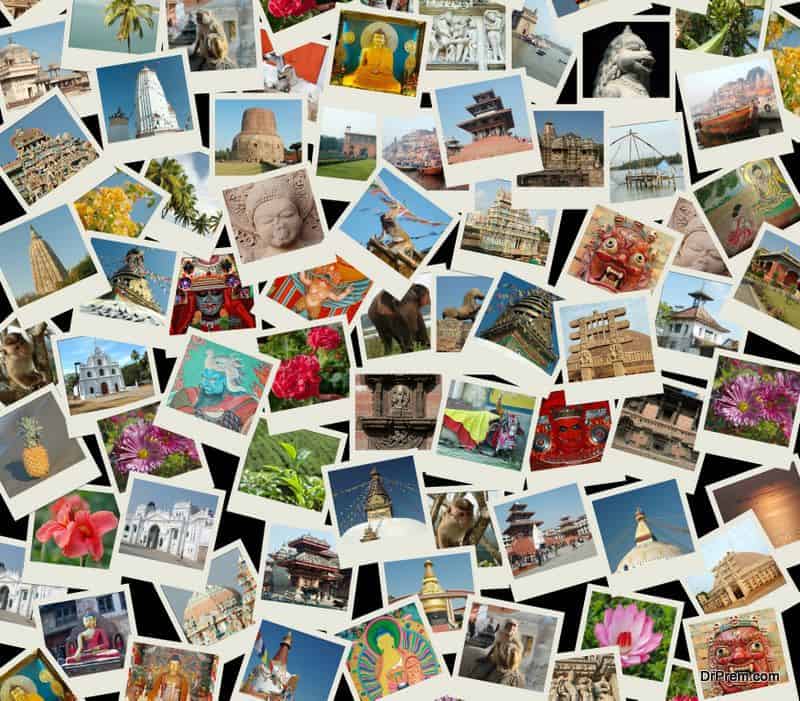
After your cultural tourism is complete you are certainly not the person you had been as if a key had been turned inside you. You are much accomplished now. Your mind had been cultivated with a refinement that you see the need to make your own contribution to the world of art and culture. I bet this creative phase is equally interesting like your tour itself if not more. The quality of the product you deliver post cultural tourism rests on how well your mind had responded to the cultural exposure abroad. If you have genuine appreciation for the work of art and cultural exhibits on your trip, the creative drive in you will find expression in varied shapes. Inspired by the exquisite crafts, the portraits and amazing landscapes in oil or water color you have procured are burning inspirations to activate the artist in you that had always desired for his voice to be heard. The wonderful photographs of monuments and legendary ruins of historic importance can be magnified and spread as blowup on your drawing room walls elevating the aesthetic value.
Decorative pieces and ethnic woodcrafts, tribal masks and indigenous weaponry like spears, boomerangs, machetes and bird traps adds life to your sitting room. The artistic value is enhanced and your guests react with appreciation. Your cultural tour abroad has widened the horizon of your mind. You can well interact with your kids exchanging views and bring back vivid flashes of the wonderful cultural tour that you just had with your family. The photographs, artwork, anecdotes, fables and publications by department of tourism, art and culture would give you the wonderful opportunity to spend quality hours. This is both educating and amusing.
Your kids will just be engrossed and would rummage through the history book for example with new found interest. Do not be surprised if your kid shows academic growth. The credit goes to cultural tourism to which your family had been exposed. Inspired by your cultural accomplishment and struck by the flair and thoroughness with which you hold your guests spellbound with your sermon on a foreign culture, they feel enlightened. Next, they would wish for going on a cultural expedition themselves. On your visit to a distant land in quest of your cultural realization, it is quite likely you have bought books and reading materials. Texts backed with flamboyant illustrations cover a wide collection, touching folklores, local and authentic cookery, jewelry and artifacts, wine, music and dances, poetry, stage shows and movies. These subjects and books keep you tuned for hours. They practically update you on the cultural vibes and values that have cast the society in a unique mold.

You can blog on the internet posting snippets of your cultural tourism exposure. Just see the boom of viewership response you get! You will simply be amazed by the spell of magic you cast on your readership. More appealing your blog touching a mix of bizarre, refined, elaborate and wonderful cultural features bigger will be the applause and encouragement you are going to receive from your blog readers. Your inclination towards getting trained in foreign culinary wonders and dance could be realized in tutorials abroad. You learn the basics and with a little innovation you may get your skills honed. What you have learned abroad finds concrete expression. So the saga doesn’t end with your trip being done. It is just a begining.
You enchant your guests with a lip smacking cuisine or an elegant ballet for that matter. You are startled to discover you have augmented your cultural wealth just by making a foreign trip. Post cultural tourism, the finer area inside you gets a dose of stimulant. This is highly sustaining and actually something that keeps you going.




